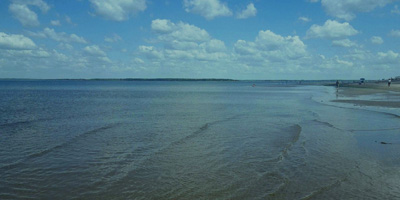Natural Asset Planning and Decision Support
At ESSA, we are dedicated to pioneering comprehensive natural asset planning and decision support. By integrating natural assets into traditional asset management frameworks, we help our clients achieve sustainable, resilient service levels that benefit both people and the environment.
![]() We help our clients identify target levels of service, develop management and monitoring options, conduct scenario-based simulations of management alternatives, assess the economic value of natural assets, develop implementation plans, and integrate with climate adaptation planning.
We help our clients identify target levels of service, develop management and monitoring options, conduct scenario-based simulations of management alternatives, assess the economic value of natural assets, develop implementation plans, and integrate with climate adaptation planning.
Levels of service (LOS) refers to the expected performance of assets. Many of our clients have defined LOS for built or engineered assets but not natural assets. For example, drainpipes are designed to handle a specific threshold of storm intensity, but that target is determined without considering nature’s contribution. This creates challenges when, for example, a forest is removed, altering the biophysical assumptions under which the original LOS was determined. We typically work in focus groups with community members and technical teams to develop target levels of service.
Natural asset management often involves taking some action to increase or maintain the provision of ecosystem services from one or more natural assets. Once a baseline is quantified (see Natural Asset Inventories), we use additional simulation modelling to assess deviations from this baseline, and from target levels of service, that would be caused by different management scenarios. We work closely with client technical teams and/or community partners to identify and design alternatives, define the spatial boundaries of the options, pre-assess whether these alternatives would have enough material impact on the focal services to warrant modelling, and conduct simulation modelling to compare how service provision would change in biophysical (e.g., m3/s) or behavioural (e.g., recreational user days) units of measure.
Ideally, natural assets are included in asset accounting just like built/engineered assets. To do so, economic valuation is required. For example, the benefits of stormwater mitigation are often valued using “replacement cost” or “avoided cost” approaches. There are other non-market valuation techniques, each requiring different degrees of effort in terms of data collection and academic credibility. We work with our clients to educate about these options and to ensure the appropriate valuation approach is selected to meet our client’s needs.
Our services in this space include:
- defining target levels of service including development of appropriate indicators of service provision that can be monitored
- developing management options that are realistic, practical and can be simulated in a modelled environment for assessment
- simulation modelling of management options, harnessing our extensive expertise in modelling of biophysical systems and model coupling to express scientifically rigorous outputs in economic terms
- ecosystem services valuation using a variety of market and non-market approaches including discrete choice experiments, benefit transfer, replacement costs, foregone benefits, direct benefits/costs, avoided costs, and revealed preference methods
- implementation plan development after a preferred management option is identified to guide boots-on-the ground implementation
- integration with climate adaptation planning since many nature-based solutions can double as climate adaptation strategies






